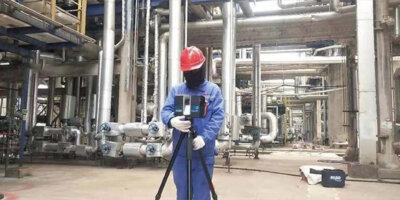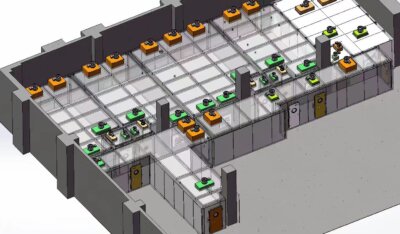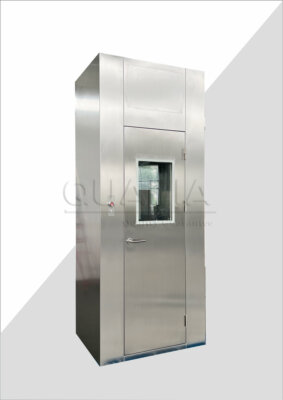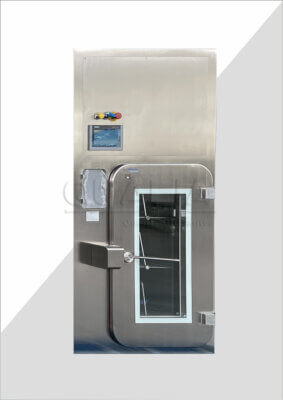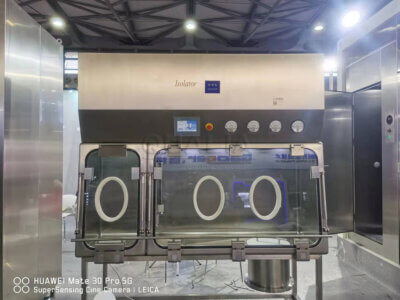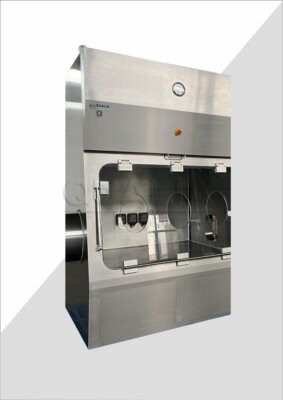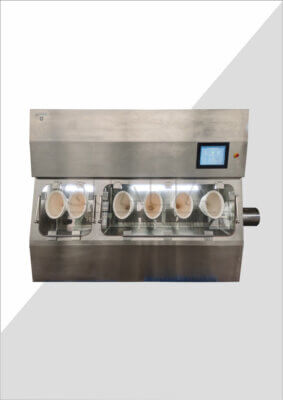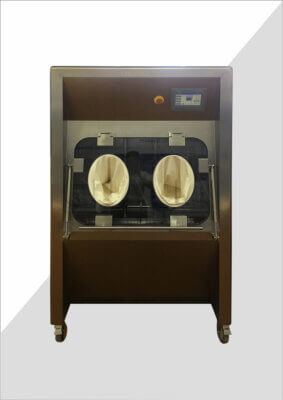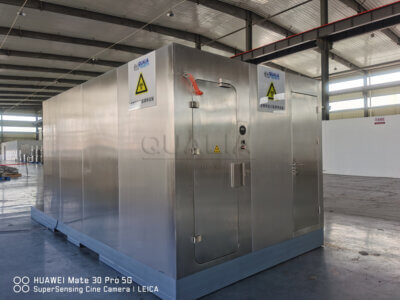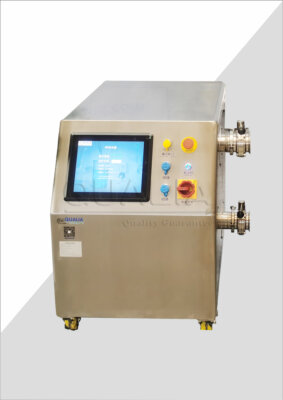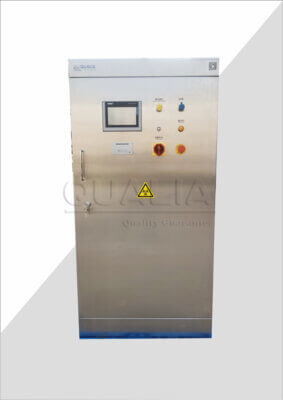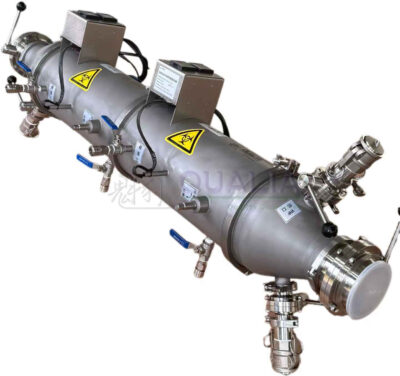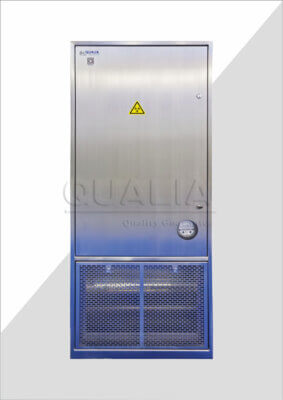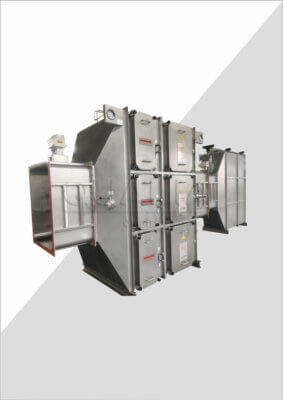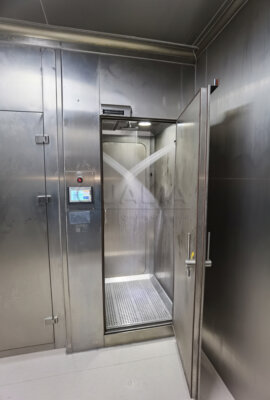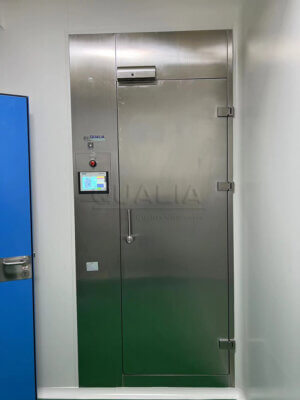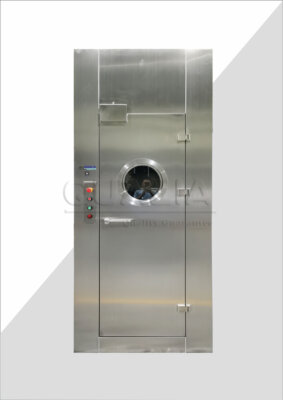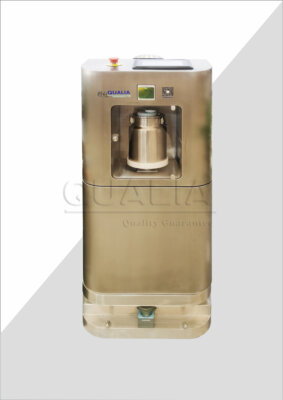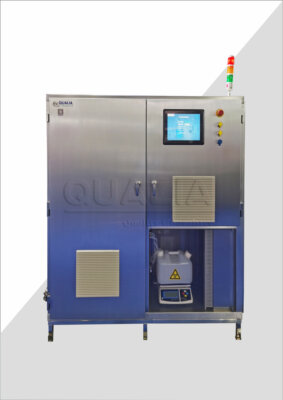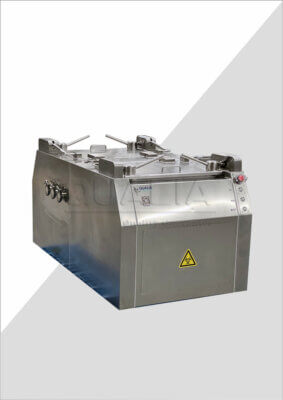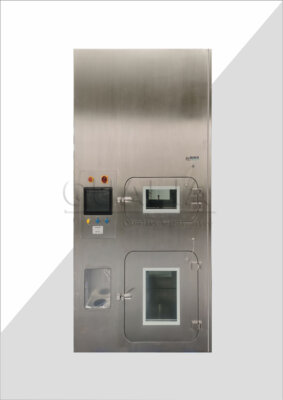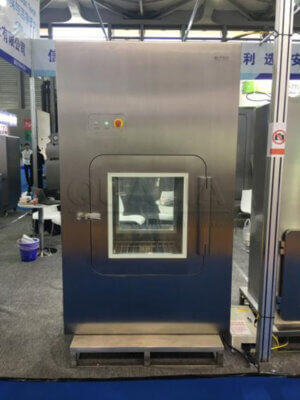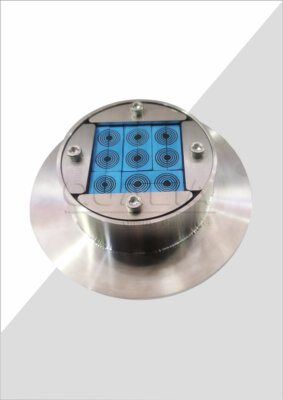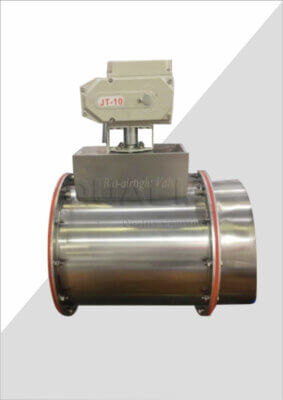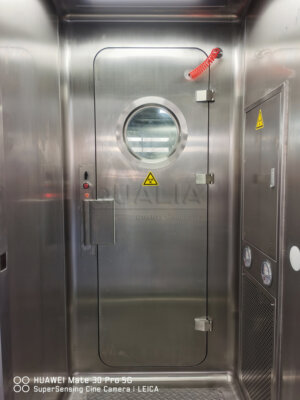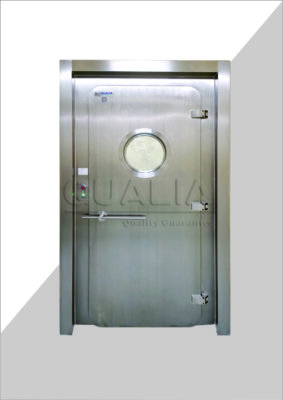In the world of pharmaceutical manufacturing and cleanroom operations, maintaining a sterile environment is paramount. One of the key technologies in achieving this goal is the Restricted Access Barrier System (RABS). As facilities strive to optimize their production processes and ensure product quality, the choice between open and closed RABS becomes crucial. This article delves into the intricacies of both systems, helping you determine which option is best suited for your specific needs.
The decision between open and closed RABS can significantly impact your facility's efficiency, product quality, and regulatory compliance. We'll explore the key differences, advantages, and considerations for each system, providing you with the knowledge to make an informed choice. From air handling mechanisms to operator intervention protocols, we'll cover all aspects that influence the selection process.
As we navigate through the complexities of RABS technology, we'll examine how these systems integrate with your existing infrastructure, their impact on operational costs, and their role in maintaining aseptic conditions. Whether you're upgrading an existing facility or planning a new installation, understanding the nuances of open and closed RABS is essential for optimizing your cleanroom operations.
"The choice between open and closed RABS is not just a matter of preference, but a critical decision that affects the entire production process and product quality assurance."
Let's dive into the world of RABS and uncover which system aligns best with your facility's requirements, regulatory obligations, and long-term goals.
| Feature | Open RABS | Closed RABS |
|---|---|---|
| Air Handling | Shares room air | Separate air handling |
| Operator Access | More flexible | Limited access |
| Contamination Risk | Higher | Lower |
| Installation Cost | Lower | Higher |
| Operational Flexibility | Higher | Lower |
| Sterilization Process | Manual | Often automated (SIP) |
| Regulatory Compliance | Good | Excellent |
| Product Types | Less sensitive | Highly sensitive |
What are the fundamental differences between open and closed RABS?
The fundamental differences between open and closed Restricted Access Barrier Systems (RABS) lie in their design, air handling mechanisms, and level of isolation from the surrounding environment. Open RABS share air with the cleanroom, while closed RABS maintain a separate air handling system, providing a higher level of containment.
Open RABS offer more flexibility in terms of operator access and intervention, making them suitable for processes that require frequent manual adjustments. On the other hand, closed RABS provide a more rigorous barrier against contamination, ideal for manufacturing highly sensitive products.
The choice between open and closed RABS depends on various factors, including the nature of the product being manufactured, regulatory requirements, and the specific needs of the facility. '(QUALIA)[qualia-bio.com]' offers advanced closed RABS solutions that cater to the most stringent aseptic processing requirements.
"Open RABS provide a balance between containment and accessibility, while closed RABS offer superior contamination control at the cost of reduced operational flexibility."
| Feature | Open RABS | Closed RABS |
|---|---|---|
| Air Exchange | With cleanroom | Isolated |
| Door Opening | More frequent | Limited |
| Decontamination | Manual | Often automated |
| Cost | Lower | Higher |
How does air handling differ in open versus closed RABS?
The air handling system is a critical component that distinguishes open RABS from closed RABS. In open RABS, the air is shared with the surrounding cleanroom environment. This system relies on the cleanroom's HEPA-filtered air supply and maintains a positive pressure differential to prevent the ingress of contaminants.
Closed RABS, conversely, employ a dedicated air handling system that is completely separate from the cleanroom air. This isolated air circulation provides a higher level of containment and reduces the risk of contamination. The air in closed RABS is typically HEPA-filtered and recirculated within the system, creating a more controlled environment.
The choice between these air handling systems impacts not only the level of sterility assurance but also the energy consumption and overall operational costs of the facility. Closed RABS generally offer superior contamination control but may require more complex HVAC systems and higher energy inputs.
"The isolated air handling system in closed RABS provides a significantly higher level of contamination control compared to open RABS, making it ideal for manufacturing highly sensitive products."
| Air Handling Feature | Open RABS | Closed RABS |
|---|---|---|
| Air Source | Cleanroom | Dedicated system |
| Filtration | HEPA (shared) | HEPA (dedicated) |
| Recirculation | Limited | Extensive |
| Energy Consumption | Lower | Higher |
What role does operator intervention play in choosing between open and closed RABS?
Operator intervention is a crucial factor in determining whether an open or closed RABS is more suitable for a facility. Open RABS allow for more frequent and easier access by operators, making them ideal for processes that require regular manual interventions or adjustments. This flexibility can be beneficial for certain manufacturing processes or during technology transfer phases.
Closed RABS, on the other hand, are designed to minimize operator intervention. They often incorporate automated systems for material transfer and decontamination, reducing the need for manual handling. While this limits flexibility, it significantly enhances contamination control and sterility assurance.
The decision between open and closed RABS in terms of operator intervention should consider the nature of the manufacturing process, the frequency of required interventions, and the level of sterility assurance needed. It's also important to factor in operator training requirements and the potential impact on production efficiency.
"The level of operator intervention required in your manufacturing process is a key determinant in choosing between open and closed RABS, balancing flexibility with contamination control."
| Aspect | Open RABS | Closed RABS |
|---|---|---|
| Access Frequency | High | Low |
| Intervention Ease | Easier | More restricted |
| Automation Level | Lower | Higher |
| Training Requirements | Moderate | Extensive |
How do regulatory requirements impact the choice between open and closed RABS?
Regulatory requirements play a significant role in the selection of RABS systems. Both open and closed RABS are designed to meet Good Manufacturing Practice (GMP) standards, but closed RABS generally provide a higher level of assurance in terms of contamination control and are often preferred for more stringent regulatory environments.
Open RABS, while still compliant with many regulatory standards, may require additional validation and monitoring processes to ensure they meet the required levels of sterility assurance. Closed RABS, with their more robust isolation capabilities, often align more closely with the most stringent regulatory expectations, particularly for the production of highly sensitive or sterile products.
When considering regulatory requirements, it's essential to look at current standards and anticipate future regulatory trends. The choice between open and closed RABS should not only meet current compliance needs but also position the facility for future regulatory developments.
"Closed RABS often provide a more straightforward path to regulatory compliance, especially for facilities producing highly regulated or sterile products."
| Regulatory Aspect | Open RABS | Closed RABS |
|---|---|---|
| GMP Compliance | Good | Excellent |
| Validation Complexity | Moderate | High |
| Future-Proofing | Moderate | Strong |
| Sterility Assurance | Good | Superior |
What are the cost implications of implementing open versus closed RABS?
The cost implications of implementing open versus closed RABS extend beyond the initial investment and include long-term operational expenses. Open RABS generally have lower upfront costs due to their simpler design and integration with existing cleanroom infrastructure. However, they may incur higher ongoing costs related to more frequent cleaning, environmental monitoring, and potentially higher energy consumption for maintaining cleanroom conditions.
Closed RABS, while typically more expensive to install, can offer long-term cost benefits through reduced energy consumption (for cleanroom conditioning), lower cleanroom classification requirements, and potentially reduced personnel gowning needs. The automated features of many closed RABS can also lead to labor cost savings over time.
When evaluating costs, it's crucial to consider the entire lifecycle of the system, including installation, operation, maintenance, and potential future upgrades. The choice should align with both immediate budget constraints and long-term financial planning.
"While closed RABS often have higher initial costs, they can provide significant long-term savings through improved efficiency and reduced operational expenses."
| Cost Factor | Open RABS | Closed RABS |
|---|---|---|
| Initial Investment | Lower | Higher |
| Operational Costs | Moderate | Lower |
| Energy Efficiency | Moderate | High |
| Maintenance Expenses | Higher | Lower |
How does product type influence the decision between open and closed RABS?
The type of product being manufactured is a critical factor in deciding between open and closed RABS. Products with high sensitivity to contamination or those requiring stringent sterility assurance often benefit from the superior isolation provided by closed RABS. This includes many biologics, sterile injectables, and certain types of cell and gene therapies.
Open RABS may be more suitable for products that are less sensitive to environmental factors or those that require frequent manual interventions during the manufacturing process. They can also be appropriate for facilities that handle a diverse range of products with varying sterility requirements.
Consider the entire product lifecycle, including development, clinical trials, and commercial production. The chosen RABS should support not only current production needs but also future product pipelines and potential changes in manufacturing processes.
"The selection between open and closed RABS should be driven by the specific contamination sensitivity and sterility requirements of your product portfolio."
| Product Characteristic | Open RABS | Closed RABS |
|---|---|---|
| Contamination Sensitivity | Moderate | High |
| Sterility Requirements | Standard | Stringent |
| Process Interventions | Frequent | Minimal |
| Product Diversity | High | Focused |
What are the key considerations for facility integration when choosing between open and closed RABS?
Integrating RABS into an existing facility or designing a new facility around RABS requires careful consideration of various factors. Open RABS generally offer more flexibility in terms of facility integration, as they can often be installed within existing cleanroom spaces with minimal modifications. This can be advantageous for facilities undergoing upgrades or those with space constraints.
Closed RABS, while potentially requiring more significant facility modifications, can allow for downgrades in the surrounding cleanroom classification due to their superior containment capabilities. This can lead to long-term savings in facility maintenance and energy costs. However, closed RABS may necessitate more complex HVAC systems and utilities connections.
When considering facility integration, it's important to evaluate factors such as available space, existing cleanroom classifications, utility requirements, and potential future expansion needs. The choice should align with both current facility capabilities and long-term strategic plans.
"The integration of RABS into your facility should consider not just the immediate fit, but also long-term operational efficiency and potential for future expansions or modifications."
| Integration Factor | Open RABS | Closed RABS |
|---|---|---|
| Facility Modification | Minor | Significant |
| Cleanroom Impact | Maintains | Can downgrade |
| HVAC Requirements | Standard | Complex |
| Future Flexibility | Higher | Lower |
How do cleaning and sterilization processes differ between open and closed RABS?
Cleaning and sterilization processes are critical aspects of maintaining the sterility of RABS and ensuring product quality. Open RABS typically rely on manual cleaning and disinfection processes, which can be more time-consuming and labor-intensive. These systems often require more frequent cleaning due to their greater exposure to the surrounding environment.
Closed RABS, on the other hand, often incorporate automated cleaning and sterilization-in-place (SIP) systems. These automated processes can provide more consistent and thorough decontamination, reducing the risk of human error and contamination. Many closed RABS also feature designs that facilitate easier cleaning and reduce the accumulation of residues.
When evaluating cleaning and sterilization processes, consider factors such as the frequency of batch changes, the types of products being manufactured, and the available resources for cleaning operations. The choice between open and closed RABS should align with your facility's capacity to maintain the required level of cleanliness and sterility.
"Automated cleaning and sterilization processes in closed RABS can significantly enhance contamination control and operational efficiency compared to the manual processes typically used in open RABS."
| Cleaning Aspect | Open RABS | Closed RABS |
|---|---|---|
| Process Type | Manual | Often automated |
| Frequency | Higher | Lower |
| Time Required | Longer | Shorter |
| Consistency | Variable | High |
In conclusion, the choice between open and closed Restricted Access Barrier Systems (RABS) is a complex decision that requires careful consideration of multiple factors. Each system offers distinct advantages and challenges, making the selection process highly dependent on the specific needs and constraints of your facility.
Open RABS provide greater flexibility and ease of access, making them suitable for processes that require frequent interventions or facilities with diverse product portfolios. They often come with lower initial costs and can be more easily integrated into existing cleanroom environments. However, they may require more rigorous environmental monitoring and cleaning processes to maintain the required level of sterility assurance.
Closed RABS, on the other hand, offer superior contamination control and often align more closely with stringent regulatory requirements. While they typically involve higher upfront costs, they can lead to long-term savings through reduced energy consumption, lower cleanroom classification requirements, and automated cleaning processes. Closed RABS are particularly well-suited for the production of highly sensitive products or in facilities where maintaining the highest levels of sterility is paramount.
The decision should be based on a comprehensive evaluation of your facility's specific needs, including:
- The types of products being manufactured and their sensitivity to contamination
- Regulatory requirements and future compliance trends
- Facility layout and integration capabilities
- Long-term operational costs and efficiency
- The frequency and nature of required operator interventions
- Cleaning and sterilization process requirements
Ultimately, the goal is to select a RABS solution that not only meets your current production needs but also positions your facility for future growth and regulatory compliance. Whether you opt for an open or closed system, implementing RABS technology is a significant step towards enhancing the sterility assurance and overall quality of your pharmaceutical manufacturing processes.
As the industry continues to evolve, staying informed about advancements in RABS technology and best practices will be crucial. Regularly reassessing your choice and considering upgrades or modifications to your RABS setup will ensure that your facility remains at the forefront of aseptic processing capabilities.
External Resources
Difference Between Open RABS and Closed RABS – This article provides a detailed comparison between open and closed Restricted Access Barrier Systems (RABS), including their types, air handling systems, and the advantages and disadvantages of each.
The Ins And Outs Of Modern Barrier Systems For Sterile Manufacturing – This resource explains the differences between open and closed RABS, including their design, air flow systems, and the conditions under which the doors can be opened. It also compares RABS with isolators.
Restricted Access Barrier System – Esco Pharma – This page describes the configurations of RABS, including open and closed systems, their air handling mechanisms, and the environmental conditions required for their operation. It also highlights the use of sterilization-in-place (SIP) and aseptic transfer ports.
Differences Between Isolators, Open Rabs and Closed Rabs – This article compares isolators, open RABS, and closed RABS, focusing on their configurations, the level of contamination control, and regulatory requirements. It emphasizes the importance of choosing the right isolation system for pharmaceutical production.
RABS vs. Isolator – Choosing the right Isolation Technology – This comparison between RABS and isolators discusses the flexibility and sterility assurance levels of each system. It covers the operational costs, environmental requirements, and the integration of automated biodecontamination systems.
Restricted Access Barrier Systems (RABS): A Guide – This guide covers the basics of RABS, including open and closed systems, their applications, and how they ensure aseptic conditions in pharmaceutical manufacturing.
Open vs Closed RABS: Which is Right for Your Facility? – This article delves into the specific considerations for choosing between open and closed RABS, including factors such as operator intervention, air quality, and the type of products being manufactured.
Barrier Systems for Aseptic Processing: RABS and Isolators – This resource from the Parenteral Drug Association (PDA) provides detailed guidelines and best practices for the use of RABS and isolators in aseptic processing, including comparisons and recommendations for different scenarios.
Related Contents:
- Regulatory Compliance and Closed RABS in Pharmaceutical Production
- Implementing Closed RABS: Ensuring Aseptic Processing Excellence
- Maintaining Sterility: The Critical Role of Closed RABS in Pharmaceutical Production
- Revolutionizing Pharmaceutical Manufacturing with Closed RABS
- Closed RABS vs. Isolators: Comparing Aseptic Processing Solutions
- Designing Effective Closed RABS for Sterile Drug Manufacturing
- Enhancing Pharmaceutical Production with Closed RABS
- Integrating EDS in Cleanroom Facilities: Design Essentials
- Optimizing EDS for Cleanroom Efficiency


